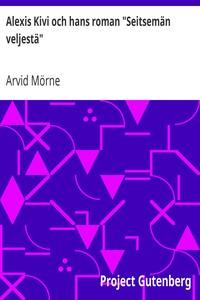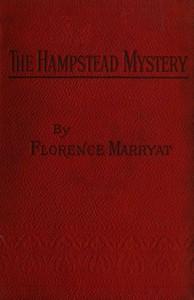|
|
Read this ebook for free! No credit card needed, absolutely nothing to pay.Words: 157289 in 52 pages
This is an ebook sharing website. You can read the uploaded ebooks for free here. No credit cards needed, nothing to pay. If you want to own a digital copy of the ebook, or want to read offline with your favorite ebook-reader, then you can choose to buy and download the ebook.

: Text book of veterinary medicine Volume 1 (of 5) by Law James - Veterinary medicine@FreeBooksFri 21 Jul, 2023 VETERINARY MEDICINE. OBJECTS AND METHODS OF STUDY. Pathology--general--special. Morbid anatomy. Pathological chemistry; Disease. Health. Death--Somatic--partial--necrosis. Syncope. Apuoea. Asphyxia. Coma. Death from old age. The principles and practice of Veterinary Medicine should embrace all that is known of the causes, nature, symptoms, prevention and cure of disease in domestic animals. Incidentally it includes diagnosis and prognosis. The same is true of structural changes. What under given conditions would be essentially a morbid structure, might under other conditions be a simple adaptation to an unwonted environment, and a means of protection from injuries that would otherwise accrue. Excessive growth of cuticular tissue in the epithelioma, wart or corn is injurious and essentially pathological, while the callus on the camel's knee or the workman's palm is purely protective and physiological. The local development of a mass of fatty tissue in the average man or beast is a disease, but the tendency to the uniform deposition of fat in the connective tissue of the improved breeds of meat producing animals, is the happy culmination of a long continued and skillful selection and regimen, without which the live stock industry of today would be a grievous failure. To constitute disease, therefore, modified function must be permanent, and not simply a compensating increase, decrease, or other change, and it must be in some way injurious to the animal economy. Similarly to constitute disease modified structure must be other than a simple protection or beneficial change, it must not be a simple evolution in the nature of accommodation to the environment but it must be a cause of injury to function or a distinct deformity. Again certain animal constitutions are innately strong and robust, while others are weak and feeble, yet the delicacy of the latter cannot be set down as actual disease, and by maintaining a due balance between the functions, a fair measure of health and even long life may be secured. ETIOLOGY: CAUSES OF DISEASE. Causes--simple--complicated: Proximate; Remote: Predisposing--race, genus, family, heredity, individual, environment, food, age, sex, temperament, idiosyncrasy, debility, plethora, interdependence of organs, embolism, mechanical influence. Exciting causes, intrinsic, extrinsic, inherent, acquired, heredity, dentition, heat, cold, atmospheric conditions, electricity, moisture, dryness, dust, darkness, light, soil, food, water, inaction, over-exertion, mechanical causes, poisons,--mineral--vegetable--animal, microbes, contagious, infectious, epizootic, enzootic, sporadic, panzootic, zymotic, mediate contagion, bacterial poisons. The causes of disease are simple or complicated, and in the latter case a single factor may be altogether harmless unless associated with another which also may have been innocuous alone. For example: the infecting germ of glanders is harmless to the ox which lacks the predisposition to the disease:--feeding buckwheat is harmless to the dark-skinned animal, but is injurious to the white-skinned, if exposed to sunshine:--the chicken can bear with impunity exposure to cold or to the bacillus anthracis, but it cannot endure these two etiological factors combined. It follows that one cannot predict the same result from the same cause in every case. Yet with all concurrent conditions the same the result will follow with mathematical certainty. This will serve to illustrate the value of thoroughness in etiological knowledge, as the basis of a sound pathology. Living Source. Chemical Product. Result. Further consideration of pathogenic micro?rganisms will be found in connection with contagious diseases. MEDICAL DIAGNOSIS. Free books android app tbrJar TBR JAR Read Free books online gutenberg More posts by @FreeBooks
: Alexis Kivi och hans roman Seitsemän veljestä by M Rne Arvid - Kivi Aleksis 1834-1872; Kivi Aleksis 1834-1872. Seitsemän veljestä@FreeBooksFri 07 Jul, 2023

: The Turk and his lost provinces by Curtis William Eleroy - Greece Description and travel; Serbia Description and travel; Bulgaria Description and travel; Eastern question (Balkan); Bosnia and Herzegovina Description and travel@FreeBooksFri 07 Jul, 2023
|
Terms of Use Stock Market News! © gutenberg.org.in2025 All Rights reserved.






